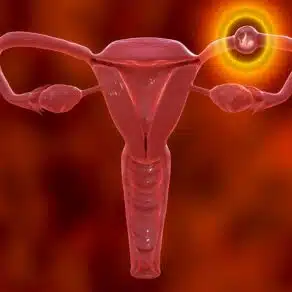Introduction: Endometriosis is commonly associated with reproductive years, but it can persist or even develop after menopause, presenting unique challenges for diagnosis and management. In this article, we delve into the complexities of endometriosis post-menopause, exploring its implications, symptoms, diagnosis, and treatment options.
1. Endometriosis Beyond Menopause:
- Persistence: While many women experience relief from endometriosis symptoms after menopause due to hormonal changes, some may continue to experience symptoms or develop new ones.
- Hormonal Influence: Although estrogen levels decrease after menopause, small amounts may still be produced by other tissues in the body, potentially fueling remaining endometriosis implants.
2. Symptoms and Diagnosis endometriosis after menopause
- Atypical Symptoms: Post-menopausal endometriosis may present with non-specific symptoms such as pelvic pain, bloating, or urinary symptoms, which can be mistaken for other conditions.
- Diagnostic Challenges: Due to the absence of menstrual cycles, traditional diagnostic markers such as cyclic pelvic pain or changes in menstrual flow are no longer applicable. Diagnosis often requires a high index of suspicion and thorough evaluation by a healthcare provider.
- Healthcare providers may utilize imaging studies such as ultrasound or MRI to visualize pelvic abnormalities, while biopsy or surgical exploration through laparoscopy remains the gold standard for diagnosis.
3. Treatment Options:
- Hormone Therapy: Hormonal treatments such as estrogen-progestin therapy or progestin-only therapy may help suppress endometriosis activity by reducing estrogen levels.
- In cases of severe symptoms or complications, healthcare providers may consider surgical removal of endometriosis implants or hysterectomy (removal of the uterus). However, it’s essential to carefully weigh the decision for surgery against the risks, especially in older women.
- Pain Management: Nonsteroidal anti-inflammatory drugs (NSAIDs) or other pain medications can help alleviate discomfort associated with endometriosis.
4. Quality of Life and Psychological Impact:
- Endometriosis after menopause can significantly impact a woman’s quality of life, affecting physical, sexual, and emotional well-being.
- Psychological Distress: Coping with chronic pain and uncertainty about the condition’s progression can lead to anxiety, depression, or feelings of isolation. Seeking support from healthcare providers and support groups is essential in managing these emotional challenges.
5. Future Directions and Research:
- Further research is needed to enhance understanding of the mechanisms underlying post-menopausal endometriosis and to develop targeted treatment approaches.
- Increased awareness among healthcare providers and the public about endometriosis after menopause can aid early detection and management.
Conclusion: Endometriosis doesn’t necessarily cease with menopause; it can persist or emerge, posing diagnostic and therapeutic challenges.
Post-menopausal women with persistent pelvic symptoms should seek medical evaluation to rule out endometriosis and explore tailored treatment options.
By raising awareness and enhancing understanding, we can better support women in managing endometriosis throughout all stages of life.





